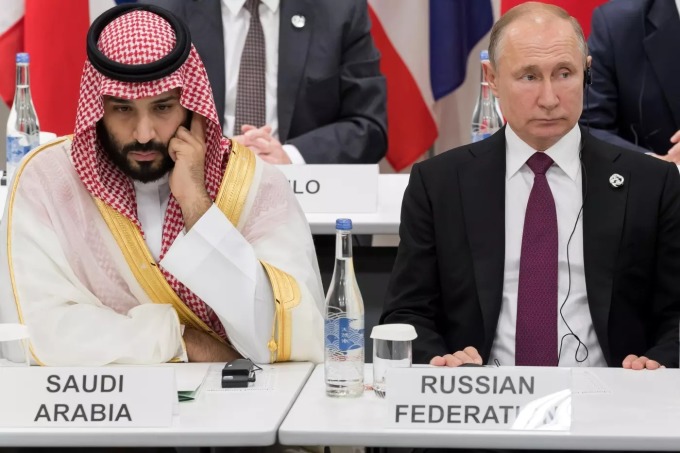Russia and Saudi Arabia are said to have made billions of dollars more from oil sales in recent months, due to high prices following their decision to tighten supply.
On September 5, Russia and Saudi Arabia announced that they would extend their oil supply curbs until the end of the year. The cuts are a risky strategy, both financially and politically . However, the strategy seems to have worked for the two most important members of OPEC+ (the Organization of the Petroleum Exporting Countries and its allies).
According to calculations by the consultancy Energy Aspects, the rise in oil prices was enough to offset the drop in exports. Saudi Arabia’s oil revenues in the third quarter may have increased by $30 million a day compared to the second quarter, an increase of 5.7%. For the quarter as a whole, that figure is about $2.6 billion. Meanwhile, Russia’s oil revenues are estimated to have increased by $2.8 billion.
This money helps Saudi Arabia finance expensive projects at home, while continuing to invest abroad to increase its influence. It also helps shore up Russia’s budget.

Saudi Arabian Crown Prince Mohammed bin Salman and Russian President Vladimir Putin. Photo: AFP
These results could prompt OPEC+ to consider further supply cuts in the future, observers say. "OPEC+ is in the driver's seat. You can see them doing more," said Saad Rahim, chief economist at Trafigura.
The group has been pressuring global oil markets for months, but its moves have had little effect so far, as fears of a global recession and slowing growth in China have kept oil prices in a narrow range.
In October 2022, OPEC+ announced a production cut of 2 million barrels per day - the largest since the pandemic began. In May, Saudi Arabia led a small group that announced a voluntary cut of another 1 million barrels per day. In July, they reduced another 1 million barrels. In early September, both Russia and Saudi Arabia simultaneously announced an extension of the cuts until the end of the year.
In the third quarter, Brent crude oil prices increased by 25%, reaching $95 a barrel at one point. OPEC+ forecasts a global shortage of 3.3 million barrels of oil per day in the fourth quarter. Many analysts have predicted that Brent crude oil prices will soon reach $100.
"Prices will go up. Supply will be tight," said Livia Gallarati, oil analyst at Energy Aspects.
The strategy of reducing supply is risky because it means sacrificing market share to competitors. If prices do not increase, they also have to accept lower revenues. The US does not like high energy prices because it can increase inflationary pressures on the economy.
Oil production costs in Saudi Arabia and Russia are quite low, with Rystad Energy estimating them at $9.30 and $12.80 a barrel, respectively.
High prices have been a boon for Saudi Arabia, which has seen booms and busts in the wake of oil price swings. Its expensive development projects have also had mixed results.
Saudi Arabia’s budget spending in the first half of 2023 was 37% higher than the same period last year, according to Capital Economics. Its $500 billion new city project has also broken ground.
Earlier this year, the International Monetary Fund estimated that Riyadh needed oil at $81 to balance its budget. If it cannot attract foreign investment for the expensive project, it would need oil at $100.
Russia has also been on a spending spree this year. It spent 35% more in the first quarter than it did in the same period last year, according to Oxford Economics. The Russian government has been running a budget deficit since the middle of last year.
Urals, Russia’s most popular oil, has risen to $75 in recent days. In the second quarter, the average price was just $65. Meanwhile, the price ceiling imposed by the West on Russian oil is $60.
Last week, the Kremlin banned exports of gasoline and diesel, further tightening global energy supplies. Global diesel prices immediately jumped.
“If you look at oil prices alone, their future looks brighter. This strategy may not be an economic turning point, but it will help them have the finances to continue spending,” concluded James Swanston, an economist at Capital Economics.
Ha Thu (according to WSJ)
Source link


































































































Comment (0)